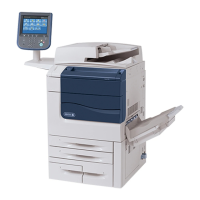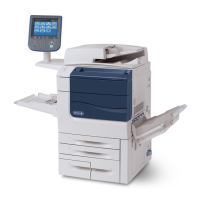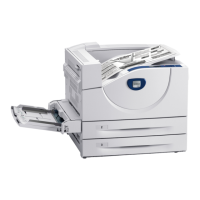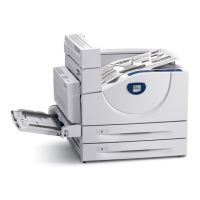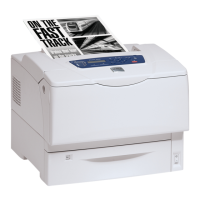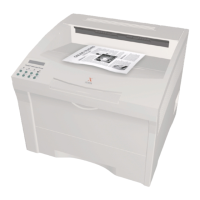6.
SYSTEM
CONFIGURATION
CONTROL
Pooled resources along with
flexible
configuration control
provide a high
degree
of continuous
availability.
If a
problem occurs in an individual
unit
of a resource
pool,
the system may allow
that
unit
to
be isolated with a loss
only
in
capacity
but no loss of functional
capability,
assuming
there
is
an
additional
unit
of
that
type in
the
system
that
can
absorb
the
added load.
Specialized
units
can
be
duplicated
(with
all
units being normally used,
where possible) and configuration
controls used
to
divert
the
input from one to
the
other in
the
event
of a
failure.
Chapter 2 describes the system
organization
and
Chapter
5
discusses system
operational
control.
This
chapter
de-
scribes
the
Configuration Control Panel (CCP), which serves
as the
principal
element
for
controlling
and
modifying
the
configuration
of
the
system.
CONFIGURATION
CONTROL
PANEL
(CCP)
The CCP provides
the
capability
for
enabling
and disabling
units in
the
system. It accomplishes this with
centrally
located
manual
selection
switches used for
the
following
functions:
1.
Establish starting addresses for
all
memory units in
the
system.
2.
Enable or disable memory ports.
3.
Enable or
disable
individual units
and
clusters.
4.
Control the power throughout
the
system.
The Configuration
Control Panel is mounted within
the
end-
bell assembly
at
the
end of
the
row of
cabinets
containing
the chassis assemblies for
the
MUs,
BP,
and
other
system
components.
On the
outer
surface
of
the
endbell
assembly
is
the
System Control Panel (described and illustrated in
Chapter
5). Access is
gained
to
the
CCP
by
opening
the
hinged endbell assembly (see Figure 16).
A
CCP has six rows of 22
toggle
switches and two lamp
in-
dicators
each.
A row may control a memory unit, processor
cluster, or system control processor. (See Figure 17, and
Tables 25
and
26.)
The
active
logic assocIated with
each
row
of
switches
and
indicators
is
located
within
each
pro-
cessor
cluster
or memory unit itself. Above
each
row
is
a
marker strip
that
identifies the function
of
each
switch.
The
configuration
control is designed in a modular manner.
As
the
system grows, previously unused rows on the panel
can
be
used (up
to
the
panel
IS
maximum of six), and
an
addi-
tional panel may be
added.
Two
panels represent
the
max-
imum
configuration
for one
endbell
assembly.
Note:
The Configuration Control Panel does not
contain
---
operational controls as
the
System Control Panel
does. The CCP switches
are
initially
positioned
during system
configuration
and
are
not normally
reposi ti oned duri
ng
system
operati
on.
CONFIGURATION CONTROL
STATUS
WORD
A program may read settings of
the
panel switches, type of
unit,
and
options
installed.
A
READ
DIRECT
(RD)
in-
struction using the chassis address of
the
cluster
or
unit
as
an
address allows
the
program
to
determine
the
con-
figuration status of a
particular
processor
cluster
or memory
unit,
for
example.
(The chassis address assignment
repre-
sents
the
chassis
'
physical location
relative
to
the
endbell
assembly.) (See Figure 16.)
The configuration
control status of a panel read by
the
RD
instruction is a
32-bit
status word consisting of panel
switch settings
and
type
information. (The
RD
instruc-
ti on is descri bed in
Chapter
3,
..
Control Instructi ons" • )
The
logic for these program provisions resides in
each
unit.
In
addition
to
reading
configuration
status information
via
a
READ
DIRECT
(RD)
instruction in a program,
the
status information may also be
obtained
by
manual switch
selection
on
the
System Control Panel;
the
32-bit
status
word is
displayed on a bank of lamp indicators. (See
Chapter
5 for a discussion
of
the
System Control Panel
features. )
CONFIGURATION
BUS
The configuration bus connects to
each
processor cl uster
and
provides a path for the system control processor
to
select
and
read the switch settings on the CCP for the
selected
unit via
an
RD
instruction.
System Configuration Control 167
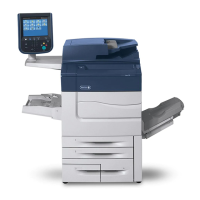
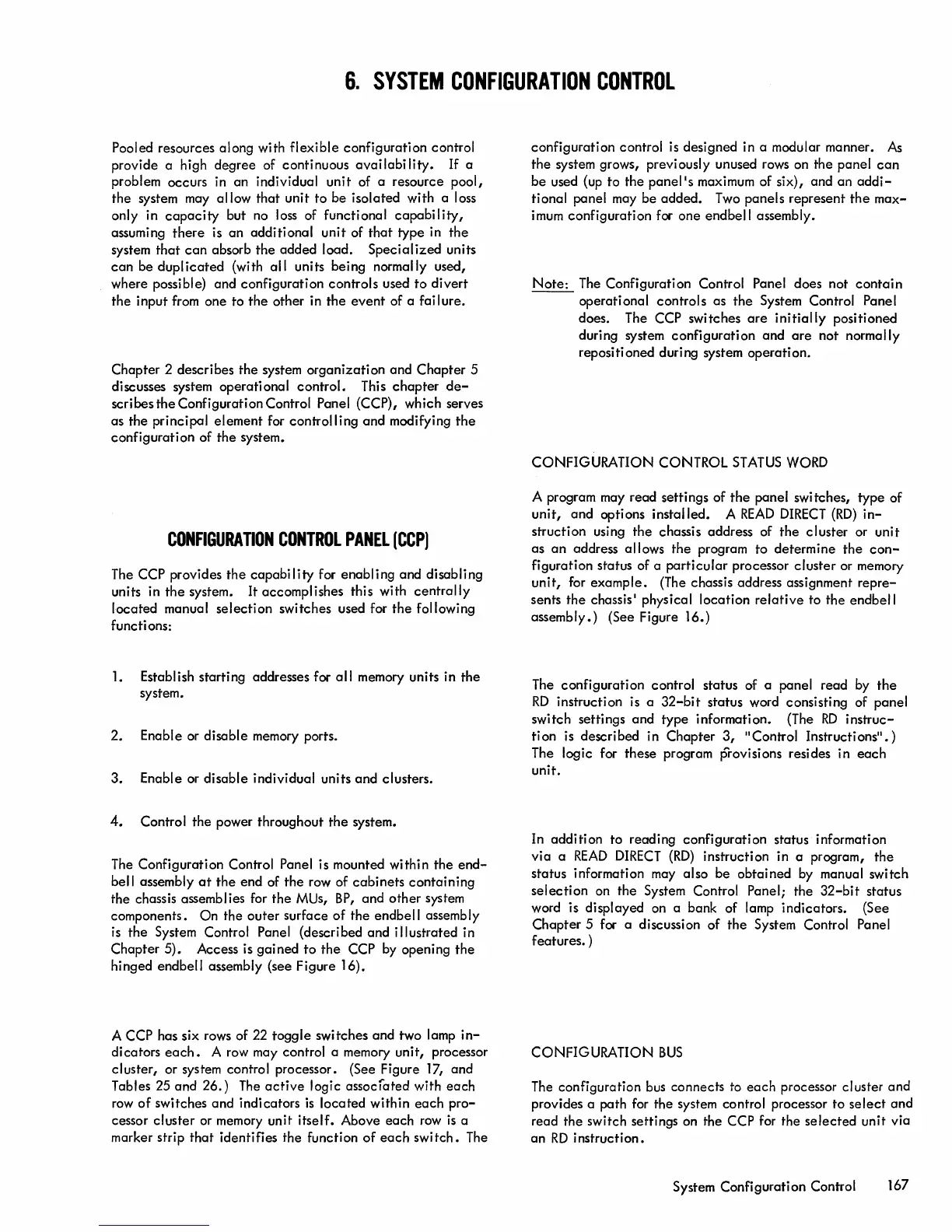